How to spend 2 days in Quebec city.
We spent 2 months in Quebec City this summer. It was a return to the area where I was born (right across the river in Levis) and where I spent the first 8 years of my life (in Ste. Marie de Beauce, about 30 minutes south of the city).
Two months gave us a whole new appreciation for this city. If you can’t make it to Europe, Quebec City is the next best thing. It is a beautiful city and it truly is the most European of North American cities.
In this post, I’ll condense our 2 months into 2 days’ worth of sightseeing. Really, 2 or 3 days in Quebec City is sufficient for most visitors. I’ll also give you some recommendations for travel further from Quebec City – the city makes for a great starting point for many of the highlights in the province of Quebec. I’ll also give you some accommodation and some restaurant recommendations.
This video covers much of what I cover (although I give you much more detail in this written post).
A brief Historical overview of Quebec City
- In 1535, Jacques Cartier was the first French explorer to “discover” what is today Quebec City. At the time there was a small Iroquois settlement of about 500 people. He claimed Canada for France.
- Cartier came back in 1541 to establish a French settlement which was called Fort-Charlesbourg Royal which was the first French settlement in North America. The fort had about 400 people and was abandoned a year later because of the harsh winter and unfriendly natives.
- It was 60 years later, in 1608, that the French came back to establish what is now Quebec City. They were led by the explorer Samuel de Champlain. At that time the colony was just a small fort that they named “L’habitation”. It held 28 people and 20 of those died in the first year because of the extreme cold. Because of its location on the St. Lawrence, it was ideal for fur trading. It was also a great strategic spot because the river narrows here, allowing the French to control traffic along the river (the name Quebec is based on the native word “Kebec” which means “where the river narrows”). The St. Lawrence was basically the door to the interior of the continent and the French controlled it.
- In 1663 Louis XIV named Quebec as the capital of New France. From here the French explored further into the continent, to the Ottawa river, the Great Lakes, and to the Mississippi as far as the Gulf of Mexico.
- The city grew and was divided into 2 main sections: the lower town where merchants carried on their business, and the upper town where the Governor’s Residence stood (called Chateau St. Louis which stood almost in the exact spot where Chateau Frontenac stands today). The upper town was also where many religious institutions such as the Cathedral and the Seminary of Quebec were built.
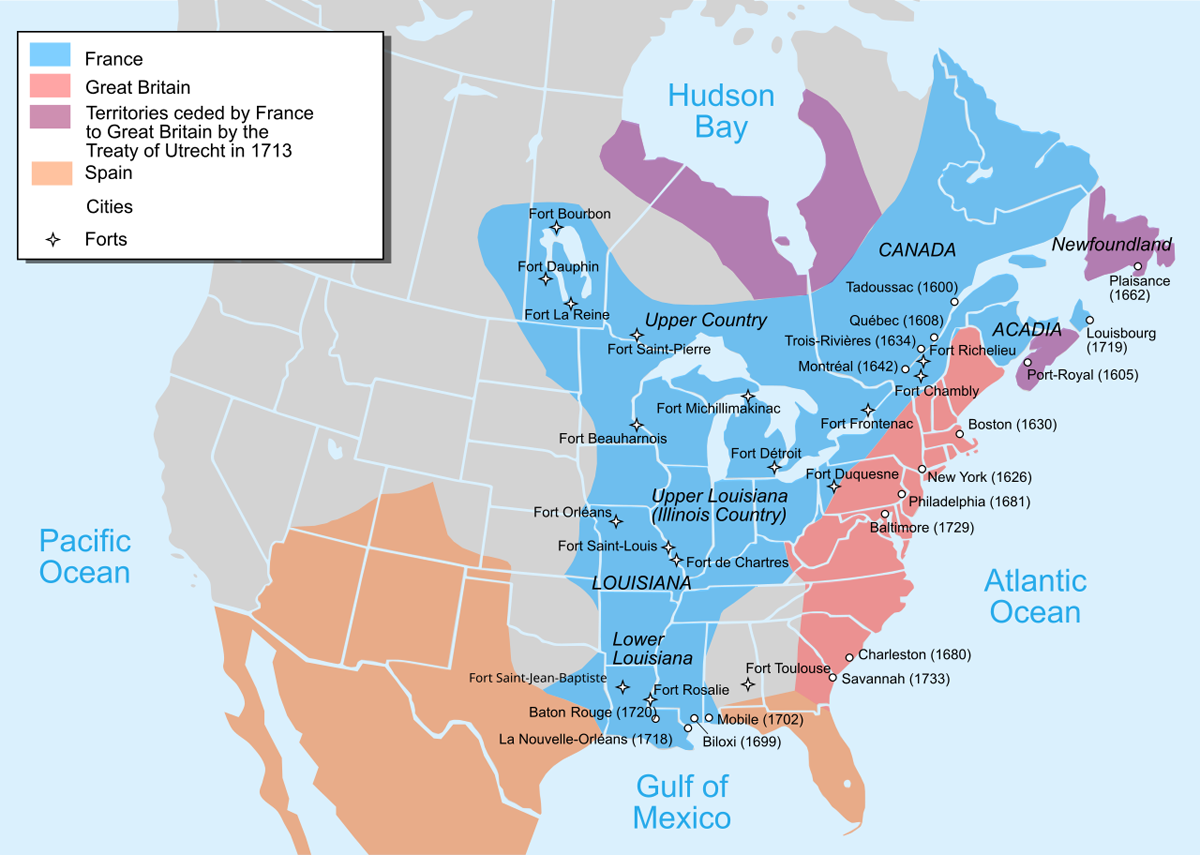
- 1759 marked the turning point in the control of North America. The French and the English were fighting each other in the Seven Years War (1756 – 1763), which was a big, multi-nation war on several continents. In North America, the decisive battle was in Quebec City. The British, under general James Wolfe, defeated the French which was defended by the French general Marquis de Montcalm. The battle on the Plains of Abraham lasted less than an hour (some claim it took as little as 15 minutes for the British to win). Both Wolfe and Montcalm ended up dying as a result of the battle.
- The battle led to British rule over Quebec. Quebec City became the principal town of a British colony known as the “Province of Quebec”. The two cultures co-existed and in 1774 the Quebec Act gave French Quebecers linguistic and religious freedom.
- In 1775 the Americans invaded Quebec City, led by Generals Richard Montgomery and Benedict Arnold. The Americans were defeated and 400 of their men were taken prisoner (Benedict Arnold is synonymous for treason because 5 years later it was uncovered that he made a secret pact to surrender West Point in New York to the British. He defected to the British side and would actually fight in battle against the Americans in the War of Independence 1775 – 1783).
- Ironically, when the British lost the American Revolutionary War in 1783 (losing all their colonies on the American east coast), Quebec City ended up being the capital of British North America.
- Quebec City was declared a UNESCO World Heritage site in 1985, the first urban setting in North America to get that recognition. It recognized the city’s role as the birthplace of French civilization in North America and as the only remaining city on this continent (north of Mexico) still surrounded by fortification walls.
Quebec City’s official Tourism website covers the city’s history in great detail.
What to See in Quebec City in 2 days
Quebec City is very compact and you don’t have to walk far to get to any of the highlights. In fact, the most arduous walking is getting to/from the Upper and Lower town by the stairs. You can however take the funicular ($6) which will do the trip in about 30 seconds.
Chateau Frontenac and the Dufferin Terrace
The Chateau Frontenac is possibly the most famous landmark in Canada and is the logical starting point to explore Quebec City.
The Chateau Frontenac was built in 1873 by the Canadian Pacific Railway when the railway barons were expanding the rail network in Canada. This hotel, coined “the most photographed hotel in the world”, has 18 floors and 610 rooms. It is a magnificent hotel that looks like a fairy-tale castle with its brick exterior, steeply-pitched roofs and towers. You can enter the hotel if you wish, the lobby is beautiful and there is a restaurant/bar and a gift shop (as well as bathrooms if you need to go). You can’t really see more than that if not a guest. If you’re only staying in Quebec City a night or two, I’d suggest a stay at the Chateau Frontenac, it’s one of the world’s most famous hotels and you can’t beat the location.
The large wooden promenade in front of the Chateau Frontenac is the Dufferin Terrace, named after Lord Dufferin, the Governor General of Canada from 1872 to 1878. Really, it’s the epicentre of action if you’re a tourist visiting Quebec City: wonderful views of the St. Lawrence river and the Chateau Frontenac, lots of activities (the toboggan slide in winter, performers in summer), steps from Cap Diamand. You’ll also see the funicular that takes you into the old town.
I have lots of memories of coming here with my parents when I was a kid, walking that promenade. It really is the highlight of Quebec City in my opinion.
Note: I have a map at the bottom of this post which sums up what I cover in this post/video. The Dufferin Terrace/Chateau Frontenac is indicated with a star and should be both your starting and ending point when exploring Quebec City.
Tourist Information Office
Right across from the Terrace and the Chateau Frontenac is the Tourist Information Office. You should go in there and get a free map as well as get any answers to specific questions you may have. They’re very well organized.
I’m using a photo below from the Tourism office, an arial photo that really best encapsulates Quebec City’s layout. You´ll see the Upper Town (protected by the cliffs on one side, the city walls on the other) and the Lower Town below.
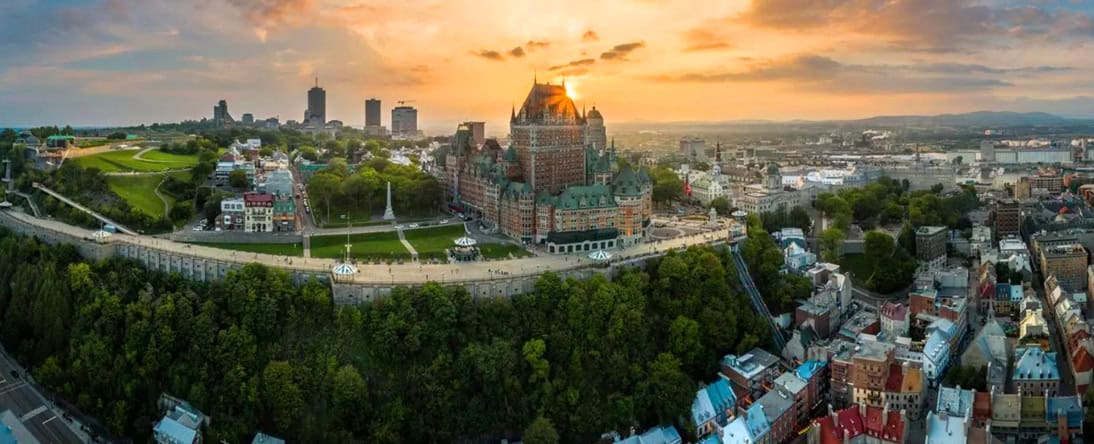
The Lower Town
The Lower Town is known as the Petit-Champlain district. It was in this district that Quebec City was founded over 400 years ago (in 1608).
Tip: For sightseeing and photography, you should visit the Lower Town in the morning. In the afternoon the sun gets in your face if looking up towards the Chateau Frontenac and then the district falls under the shadows of the cliffs as it gets later. So best to visit early.
There are 2 ways into the lower town: 1) the funicular which costs $6 and takes 30 seconds (kids under 46 inches get in free), 2) stairs: you’ll see a little alley behind the huge statue of Samuel de Champlain. Just follow that and go down the stairs. I’ve included visuals in the video above.
What to See in the Lower Town:
Place Royale. The most historic square in Quebec City, it was here that Samuel de Champlain built his fort in 1608. A pretty square with stone buildings, a statue dedicated to French king Louis XIV (who named Quebec City as the capital of New France in 1663), and the church of Notre-Dame-des-Victoires, the oldest stone church in Canada (built starting in 1688, completed in 1723).
Just steps from Place Royale is the “Mural of Quebecers”, a huge moral dedicated to Quebec history and culture. More here.
See la Rue Cul-de-Sac, which has colourful umbrellas and views of the Chateau Frontenac above. A favorite place of photographers (again, always best in the morning or at night when the sun isn’t a factor).
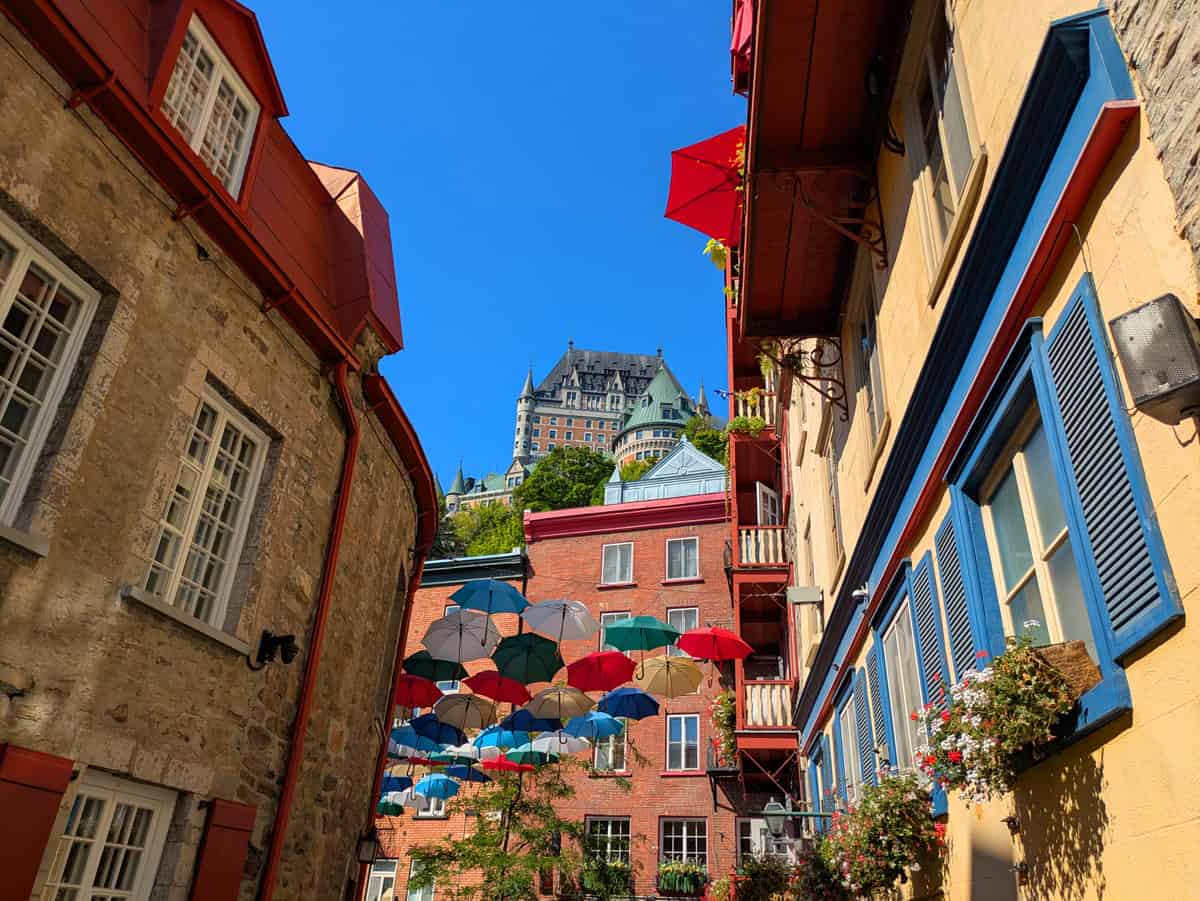
More great views at the Royal Battery, a defensive structure built in 1691.
La Rue Petit-Champlain is a favorite of many, with stone houses, tourist stores, murals, and a few cafés and restaurants.
The ferry terminal is just a few minutes away. Besides great views along the way, it’s what I would recommend if you want to see Quebec City from the water. As I say in the video, you can take a $50 tour on a tourist excursion or you can pay $4-odd ($8 return) to cross the St. Lawrence on the ferry. The crossing takes about 15 minutes and there’s a ferry every 30 minutes during the day (every hour at night). It’s way more convenient, easy, and less expensive than taking a boat tour. And the views are great.
Old Québec Funicular. In operation since 1879 and still today the easiest way to get from the Upper town to the Lower Town. For $6, the ride takes 30 seconds, it’s expensive but something you should do at least once (take it to go up, don’t waste it going down).
More: I’ve stuck to the main highlights but there’s more. Close to the Ferry Terminal is Place des Canotiers, a pleasant park with nice views on the river and the skyline of Quebec. Rue Saint-Paul is a pretty street with antique shops and outdoor terraces. The Old Port is a nice place to walk around, there’s even a swimming area. Finally, if you continue down Saint-Paul you’ll get to the historic train station and the Quebec City sign.
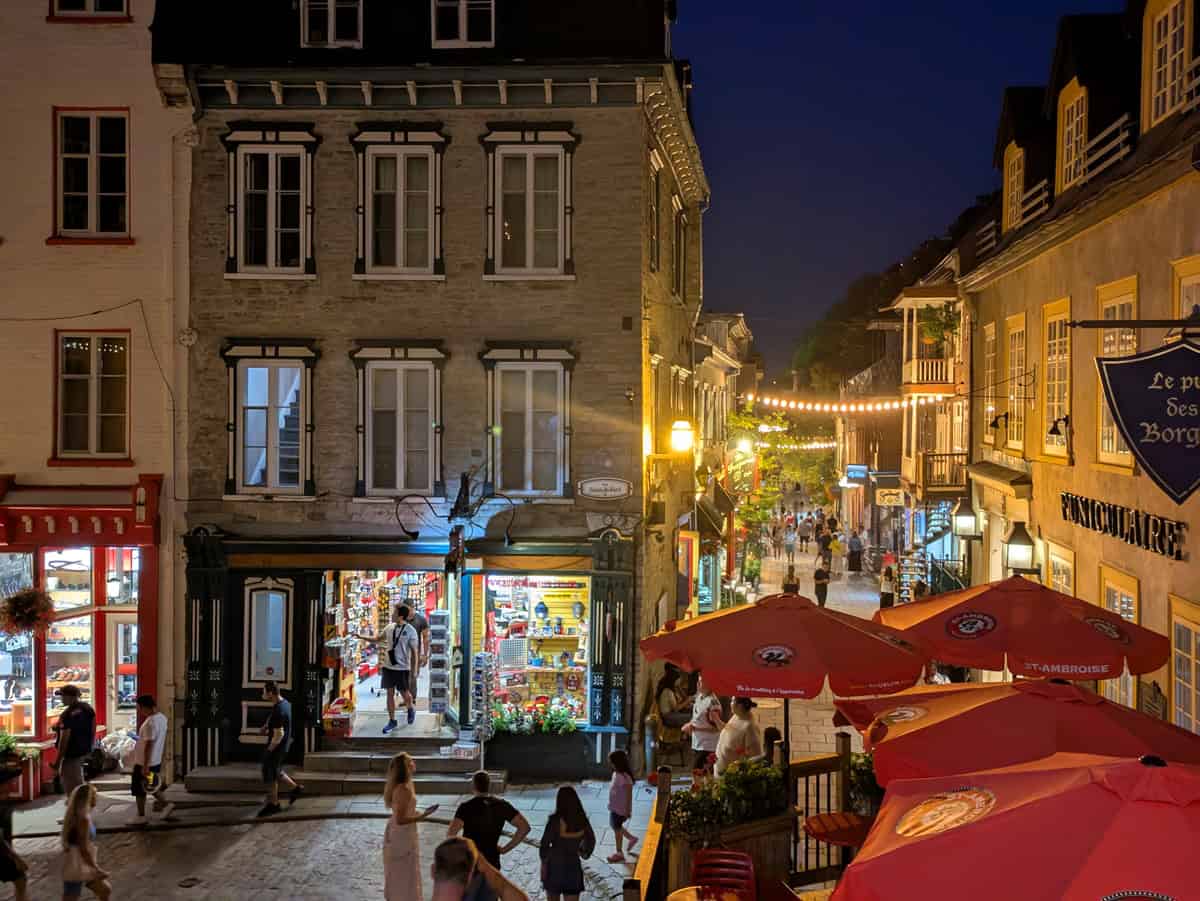
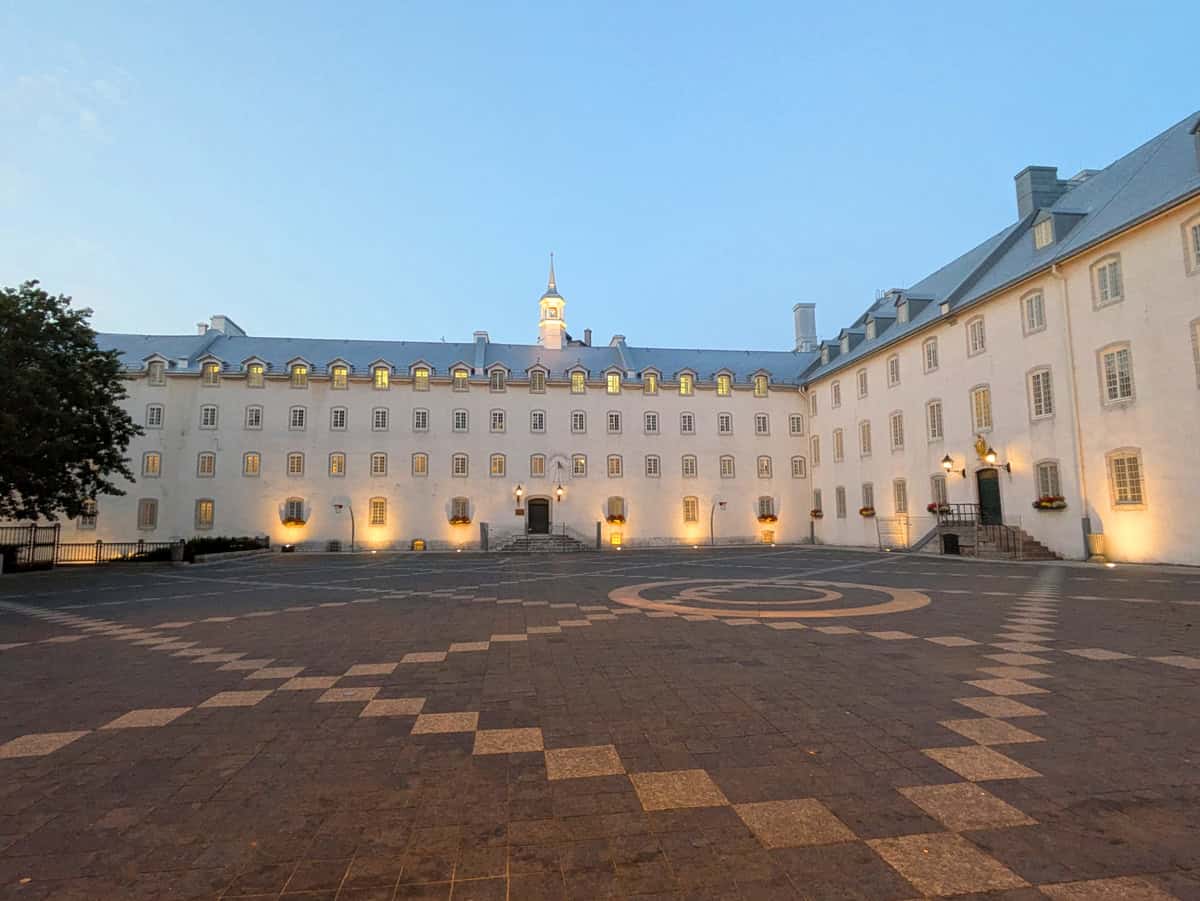
The Upper Town
Back in the Upper town, there is lots to see within the walls of the city. The highlights:
Notre-Dame de Québec Basilica-Cathedral. Originally built in 1647, it is the site of the oldest church in Canada. It’s burned down a few times, the latest version of the church dating to the 1920’s. But it is a beautiful church.
Quebec Seminary. Right next to the Basilica-Cathedral (it’s easy to miss), the Seminary was built in 1663. It is the oldest educational institution in Canada, a place where young men were trained to be priests. They would then be sent to parishes and missions throughout New France.
Québec City Hall. Right across from the square that sits in front of the Basilica-Cathedral is City Hall, a statuesque building with gardens and multi-coloured fountains (a popular place on a summer evening). Built on the site of an old Jesuit college.
The above highlights sit on Place Hotel de Ville, one of the prettiest squares in Quebec City.
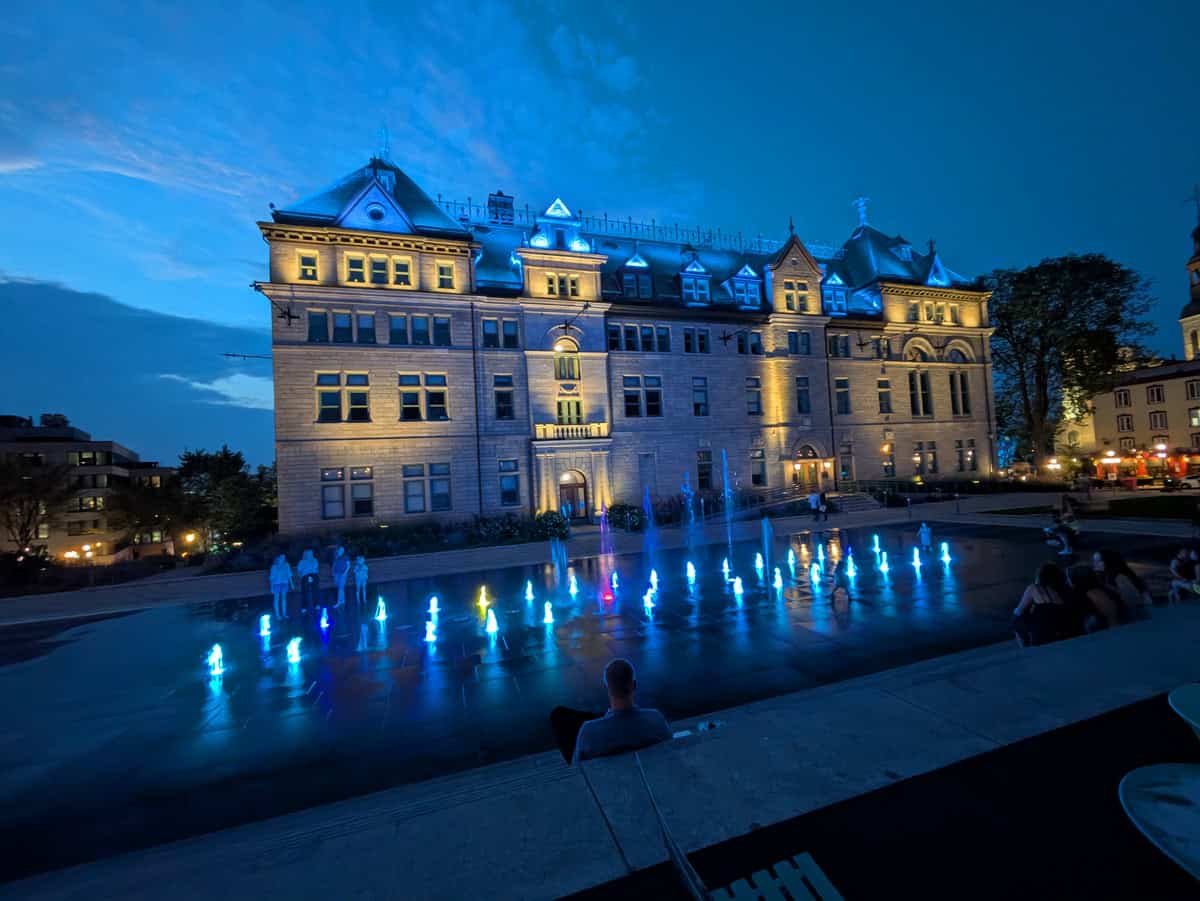
A block away, walking back in the direction of the Chateau Frontenac, you can walk Rue Sainte-Anne which has colourful buildings and busy restaurants. Rue du Tresor is here as well, a place where local artists sell their paintings. The whole area is attractive and gives you Paris vibes.
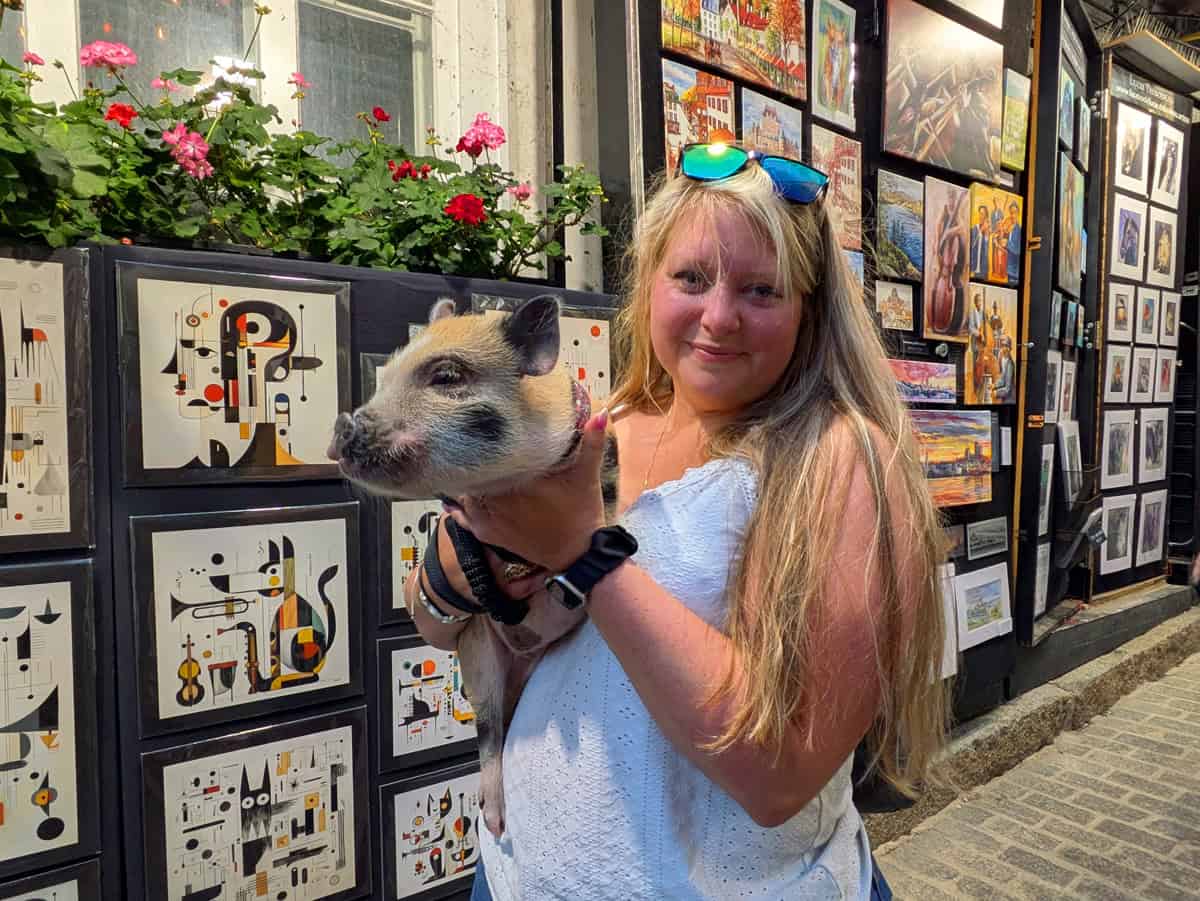
Towards the Citadelle and fortifications
In the video, my starting point for the next highlights were the Dufferin Terrace/Chateau Frontenac.
At the very end of the Dufferin Terrace (where you see a hill. That’s Cap Diamant), there is a set of stairs. That’s for the Promenade des Gouverneurs. That’s a nice walk which I mention later. But instead of going up those stairs, look for the little street that goes up right next to the Toboggan slide. Follow that and go up the path or the set of stairs. That will bring you to a lookout. That’s the Pierre-Dugua-De-Mons Terrace. It has fabulous views of the Chateau Frontenac, the Dufferin Terrace and the St. Lawrence river.
When you’re done there, go up the stairs to the top. You’ve arrived at the path that skirts the Cidadelle, the fortress built by the British in the 1800’s to defend the city from the Americans (who invaded Quebec City several times without success). The Citadelle is now an active base for the 22nd regiment of the Canadian armed forces.
You’re at the highest point in Quebec City. This is Cap Diamant (in French, Cape Diamond in English). The views are great and you can see why Quebec City has such a strategic location. With the narrowing of the river here, the defenders of the city could control any traffic attempting to pass below.
Walk the path around the Citadelle, you’ll have nice views of Quebec City from this vantage point.
Visiting the Citadelle. You’ll get to a point where the path goes down to a road. That’s the entrance to the Citadelle. You can go in, there’s some placards with information and you’ll get to a gate where you’ll see guards in ceremonial uniforms. People often come here at 10 am for the changing of the guards (although it seems to also happen at 3 pm, at least when we were there).
Unless you pay for a tour, you can’t go in further than the entrance. We didn’t take the tour but it gets good reviews. You can prebook a tour here, cost is $22 and it lasts an hour.
After the tour, or if you wish to just keep on walking around the Citadelle, just follow the path to the right of the Citadelle entrance. You’ll go over a little footbridge and will soon be looking out at some fields. These are the Plains of Abraham, the site of the Battle of the Plains of Abraham on September 13th 1759. It was the battle that would change history, it would lead to British rule in most of North America.
Note: There is the Plains of Abraham Museum if you are interested in learning more about the famous battle.
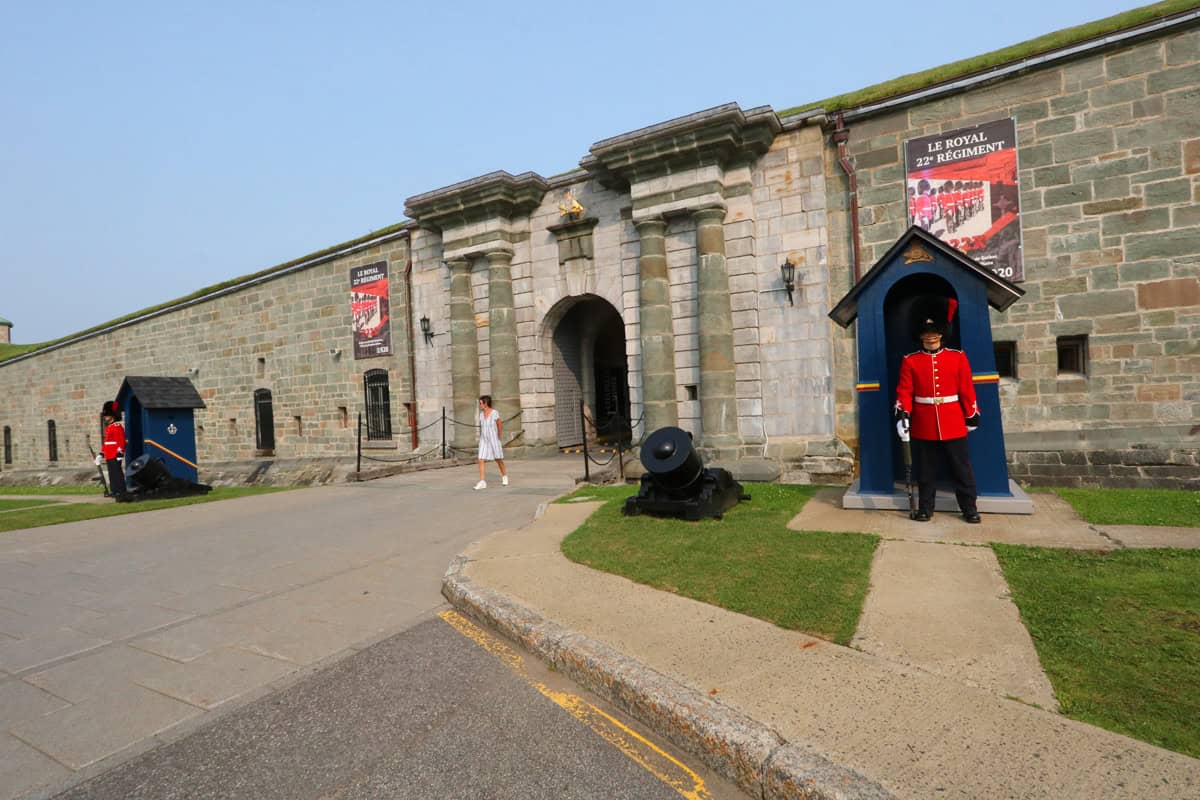
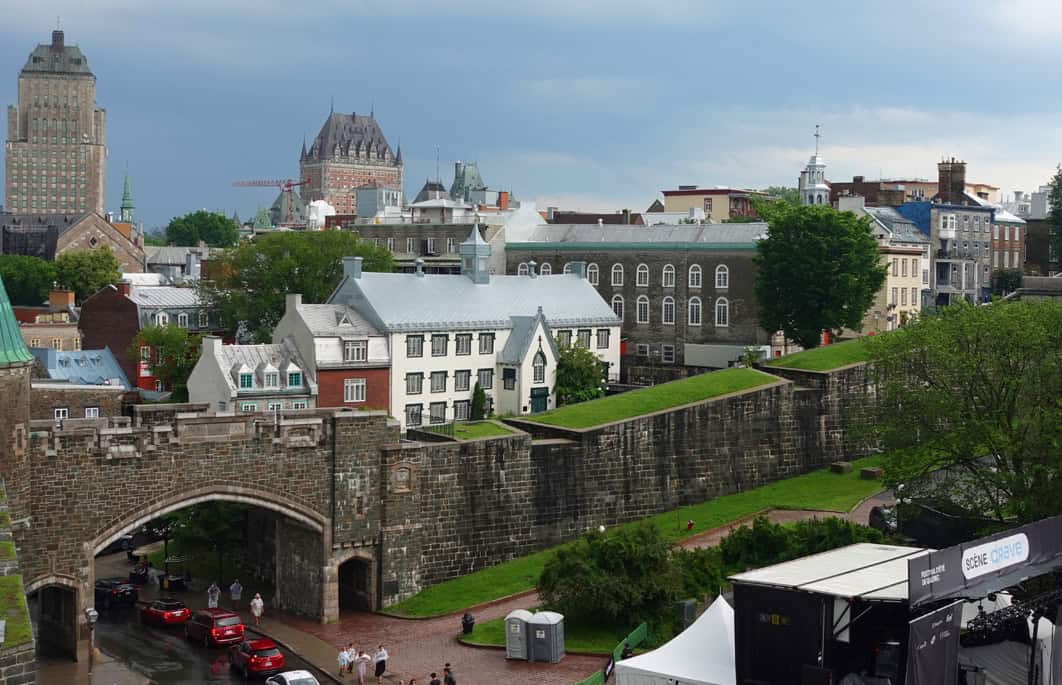
Continuing the walk around the Citadelle, you’ll arrive at a scenic lookout at the river. The Promenade des Gouverneurs starts here, a trail maintained by Parks Canada which runs high along the river behind the Citadelle and which takes you back to the Dufferin Terrace (and those stairs which I previously mentioned). A nice walk if you have a chance.
But for now, I would head (as I do in the video) towards the city center, following the road (which skirts the outer walls of the Old City).
You’ll arrive at a crossroads and see a gate heading into the Old City. That’s Porte St. Louis (the St. Louis gate) which was one of two gates constructed by the French in the 1600’s. More about the St. Louis gate and the fortifications in a minute.
But before, head to Quebec’s Parliament building which is just across the street. This huge building was built in the late 1800’s and was inspired by the Louvre in Paris. Some pretty gardens and you’ll see a fountain In front of the building (the Tourney Fountain). The fountain was installed in Bordeaux France and was moved to Quebec in 1960.
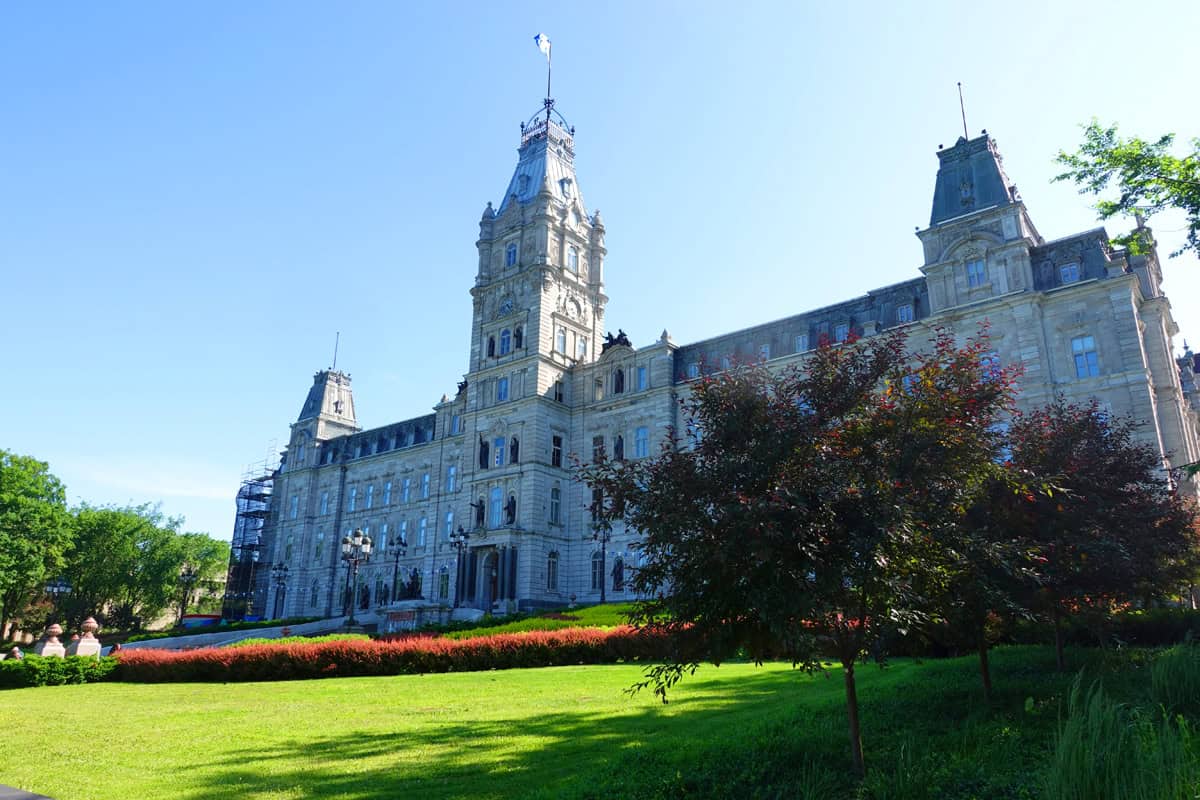
The Gates and Fortifications
As I mentioned, the Porte Saint Louis is one of Quebec’s original city gates from the 1600’s. It runs over Rue Saint Louis, one of the major streets in Old Quebec.

You can take steps up the gate, arriving at the top. From here you’ll be walking along the city walls, going downhill until you reach the Porte Saint Jean. Along the way you’ll see cannons, mini forts and gates along with nice views of the city. Originally built in 1690, they were hastily built and many were replaced a few years later. What you see today mostly dates from around 1745. Quebec City is the only city in North America whose original defensive walls still exist, one of the reasons for the city’s UNESCO World Heritage site status.
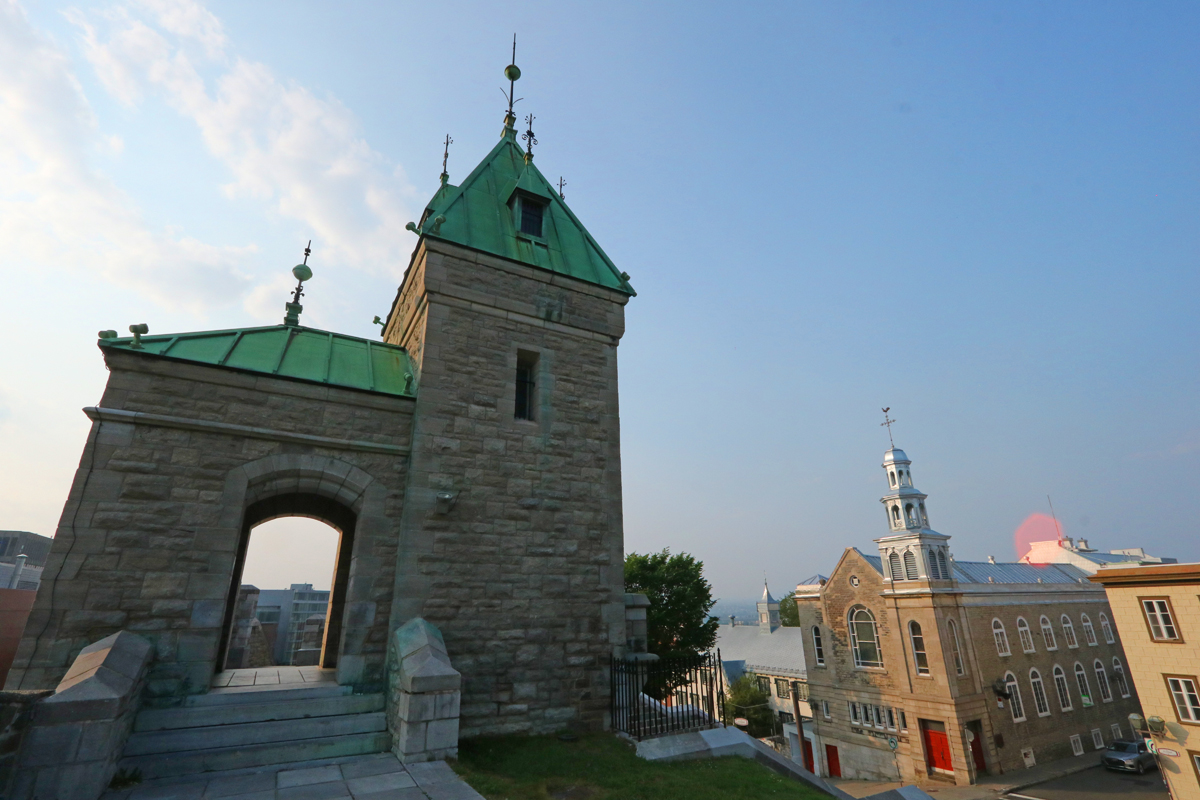
Walking, you’ll pass the Kent Gate which was built by the British in the 1870´s (part of Lord Dufferin’s renovation works). Finally, you get to Porte Saint Jean.
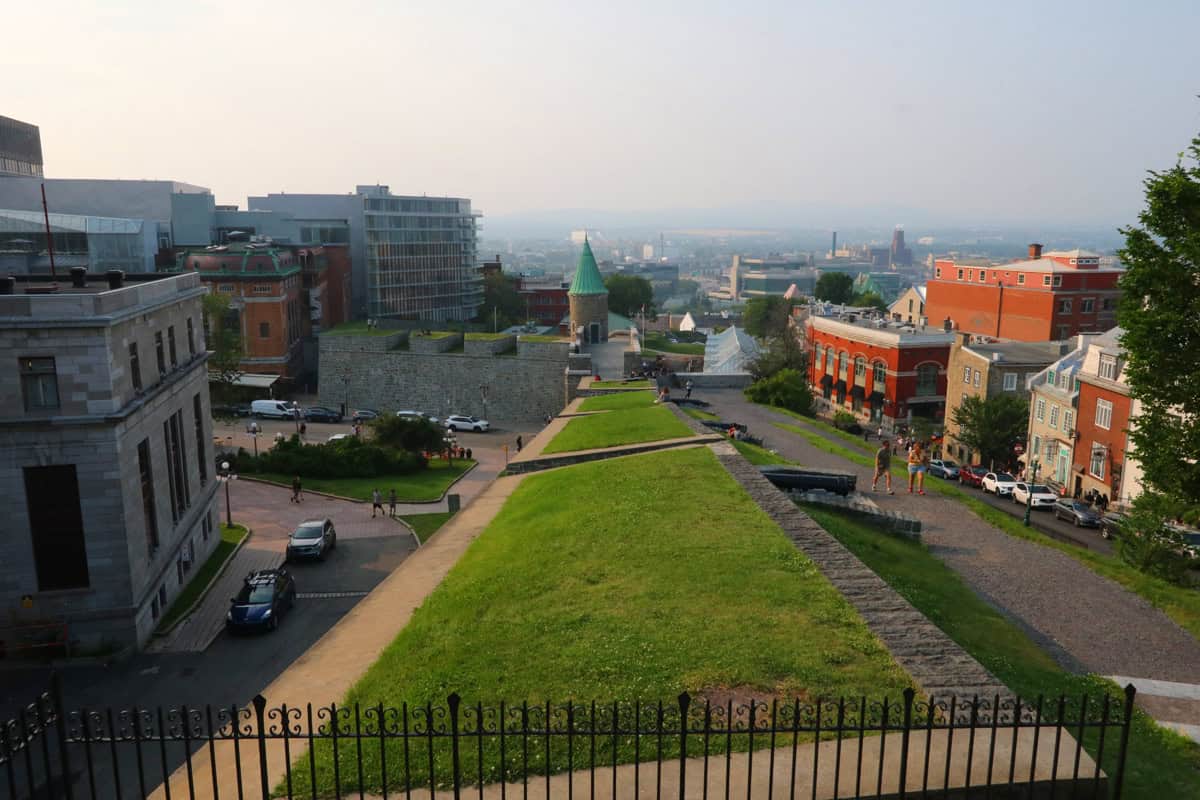
Porte Saint Jean was the other original French-built gate, dating from the 1600’s. Atop the gate you get good views of the city and Rue Saint Jean, the busiest (more touristy) street in the Old Town. Lots of bars, restaurants and souvenir stores here, it is very vibrant.
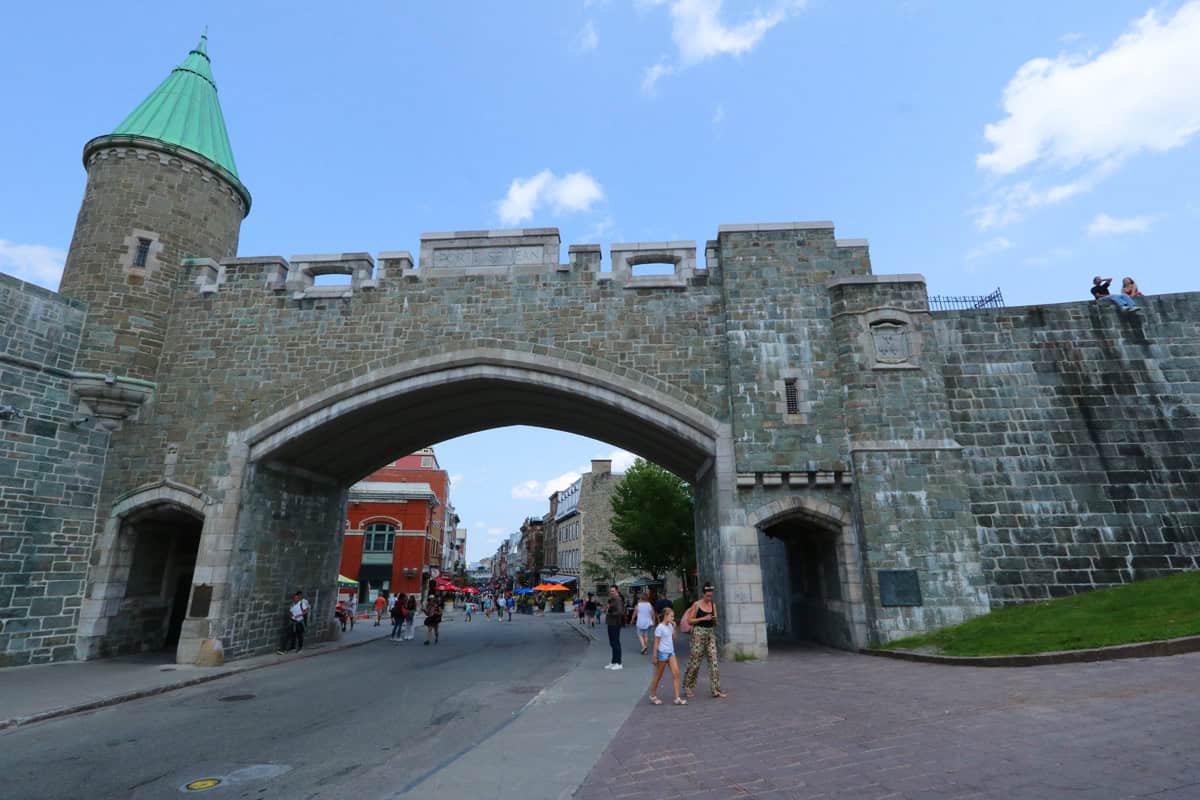
Walking along Rue Saint Jean, you’ll arrive back at City Hall Square, steps from the Chateau Frontenac. You’ve completed a circular walking tour encompassing Quebec City’s key highlights.
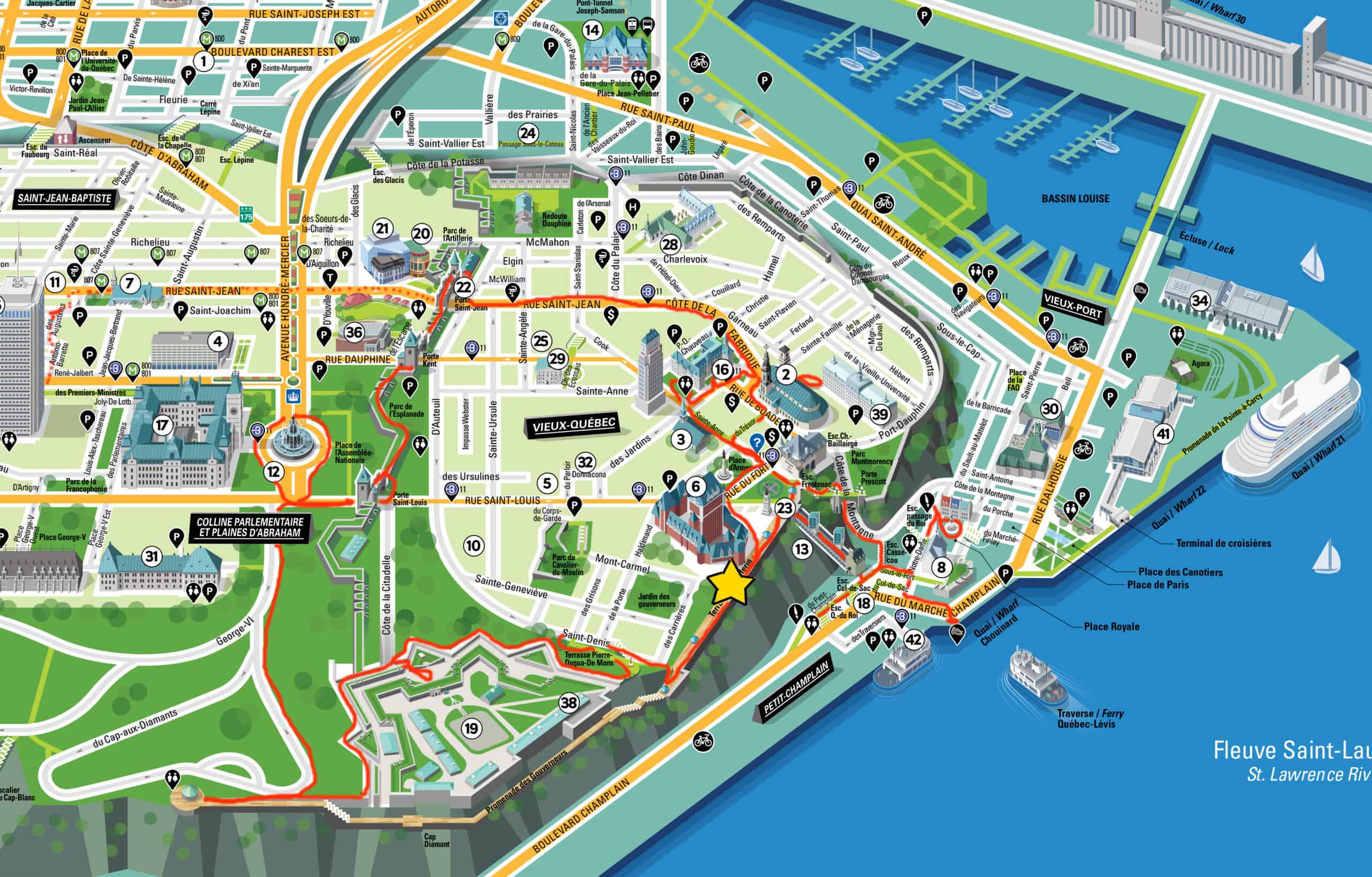
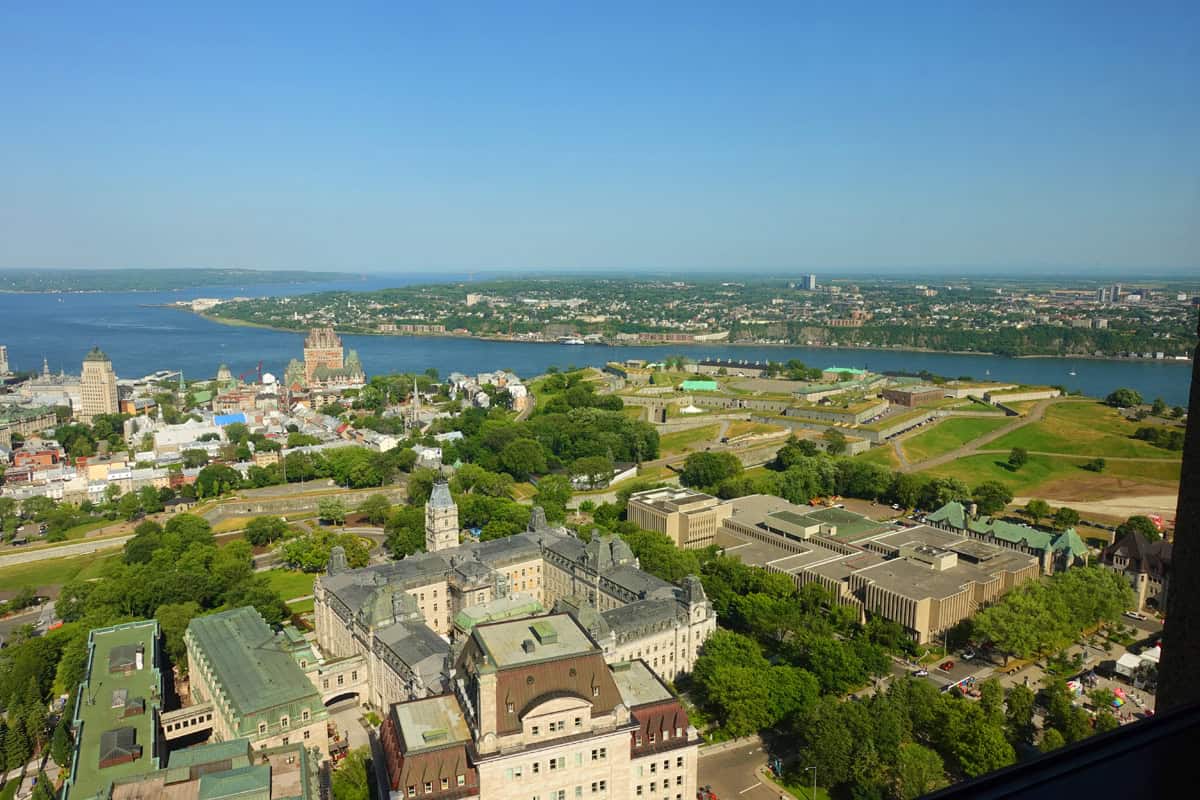
What else to See in (and around) Quebec City
There are a few other things I would also recommend.
The Capital Observatory. A highrise just behind the Parliament building where you get stunning, 360 views of the city. A great overview of the city.
Montmorency Falls. 14 km from Quebec City are the highest falls in the Province of Quebec (84 m, or 275 feet high. That’s higher than Niagara Falls which are 51 m or 167 ft high). All about Montmorency Falls here.
The Best Museums in Quebec City: The Museum of Civilisation (in the Lower Town) is highly recommended, especially if you have children and teens. Musée national des beaux-arts du Québec for fine arts including indigenous art (located next to the Plains of Abraham), the Citadelle Museum and Plains of Abraham Museum if you want to know more about the famous battle. More here.
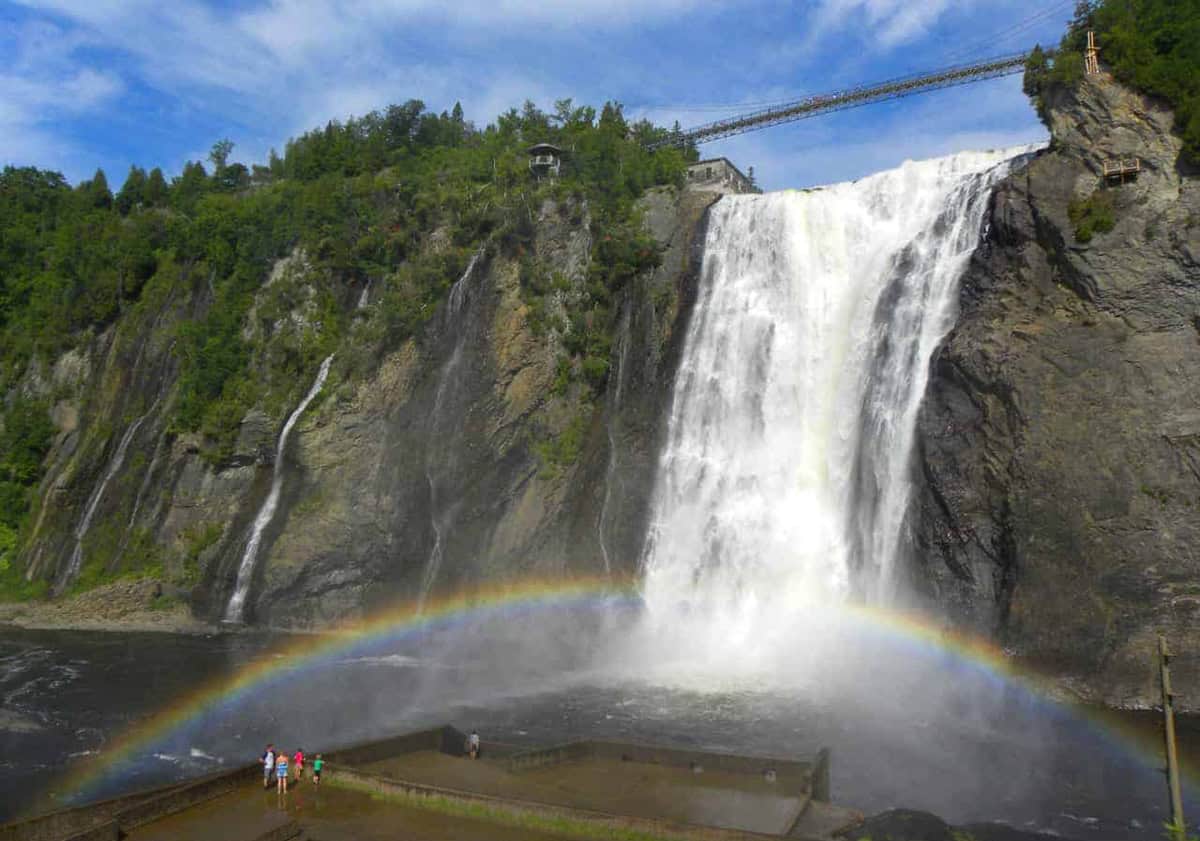
Around the Province of Quebec
Further away: For those wanting to visit other places in the Province of Quebec, Quebec City makes for a great starting point. The highlights are nature: Quebec has 47 national parks, all with a varied mix of natural attractions. A few of my favorite places: Tadoussac and the Saguenay Fjord, the Gaspé Peninsula. Have a look at my Guide to the Province of Quebec.
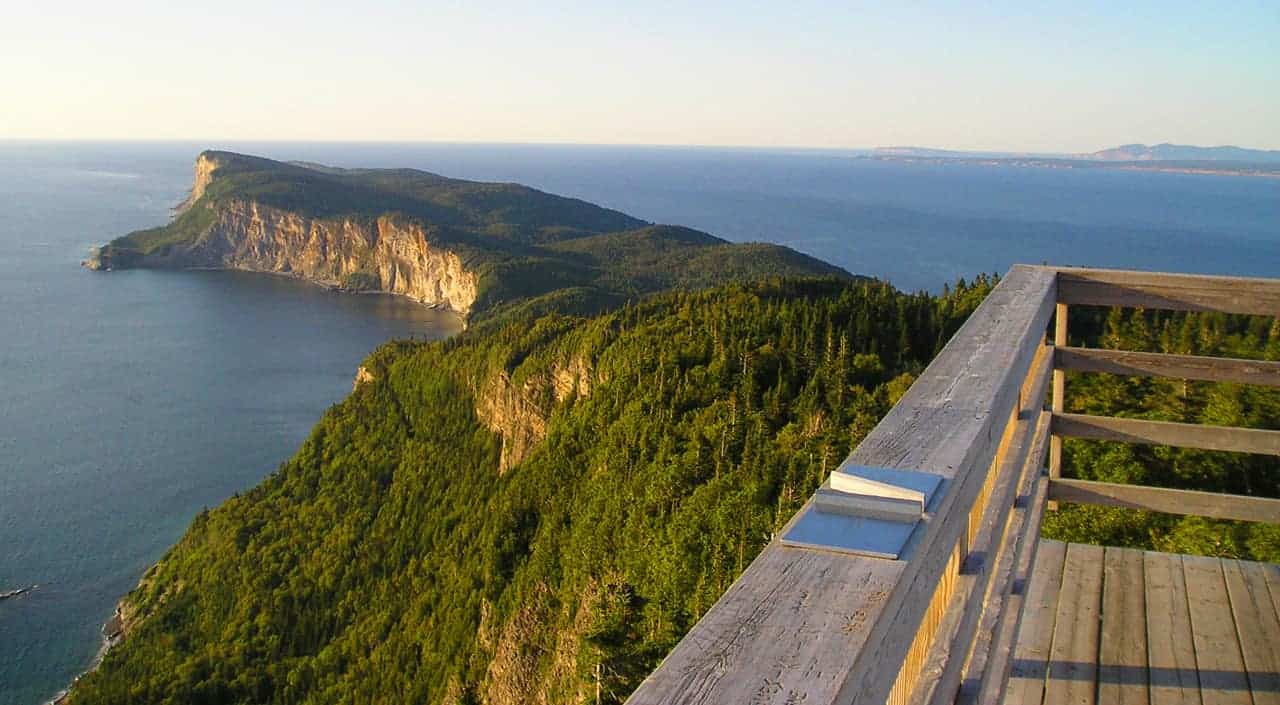
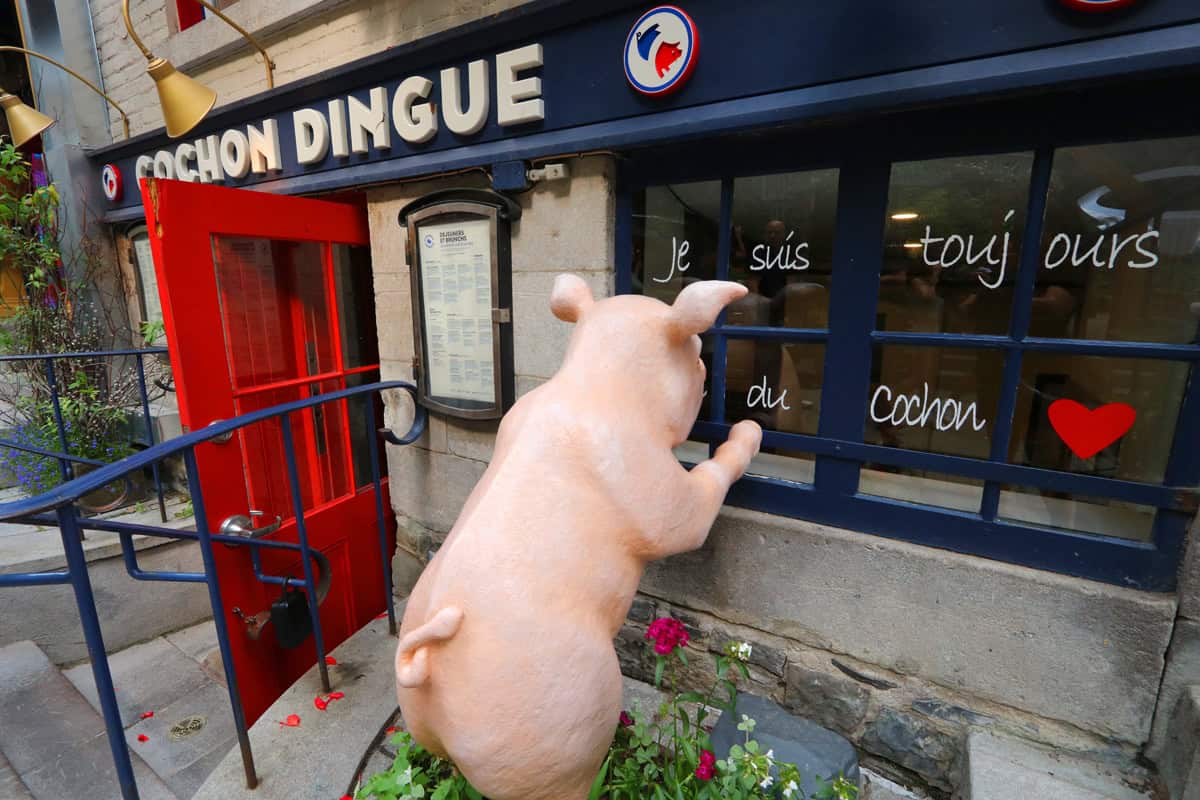
Practical Information
Where to stay: Apartment: this incredible luxury apartment which is good value if you are a family or travelling with friends. Superb. Hotels: The Chateau Frontenac if only staying for a night or two and looking to stay in one of the most famous hotels in the world. The Hilton Quebec is popular and just outside the city walls. A good budget option is Hotel Le Saint-Paul.
Where to Eat (recommendations from childhood friends who live in Quebec City): Budget: Papa Sandwich on Avenue Cartier makes amazing take out sandwiches (I mention Avenue Cartier in the video: a favorite street among locals for restaurants and bars). Chez Victor specializes in Burgers and they have various locations around the city (including one close to Av. Cartier). Mid-Budget: Cochon Dingue is located on Rue Petit-Champlain in the Lower Town and gets great reviews for breakfast and traditional French dishes such as steak and fries, ribs, Duck in fois gras…then even have poutine. Nina Pizza and Pizza 900 are good (pizza obviously) and have several locations around the city. Higher-end: traditional French fare at Bistro B (again, Avenue Cartier), Metropolitain Eddie for sushi (also Avenue Cartier), Le Saint-Amour for French cuisine in the Old Town (inside the walls of the Upper Town), Chez Boulay-bistro boreal (also inside the walls of the Upper Town, same chef as Le Saint-Amour), Le Clocher Penché in the Saint-Roch neighbourhood for high-end international cuisine (very highly rated). I received a few other recommendations, so many that I’ll do a post just on “Where to Eat in Quebec City” (coming up). But the above should get people started and most are close to Quebec’s Old Town.
The above will keep you busy for at least 2 Days when visiting Quebec City.
Related: The Best Photo Locations in Quebec City
Related: A Local’s guide to Montreal

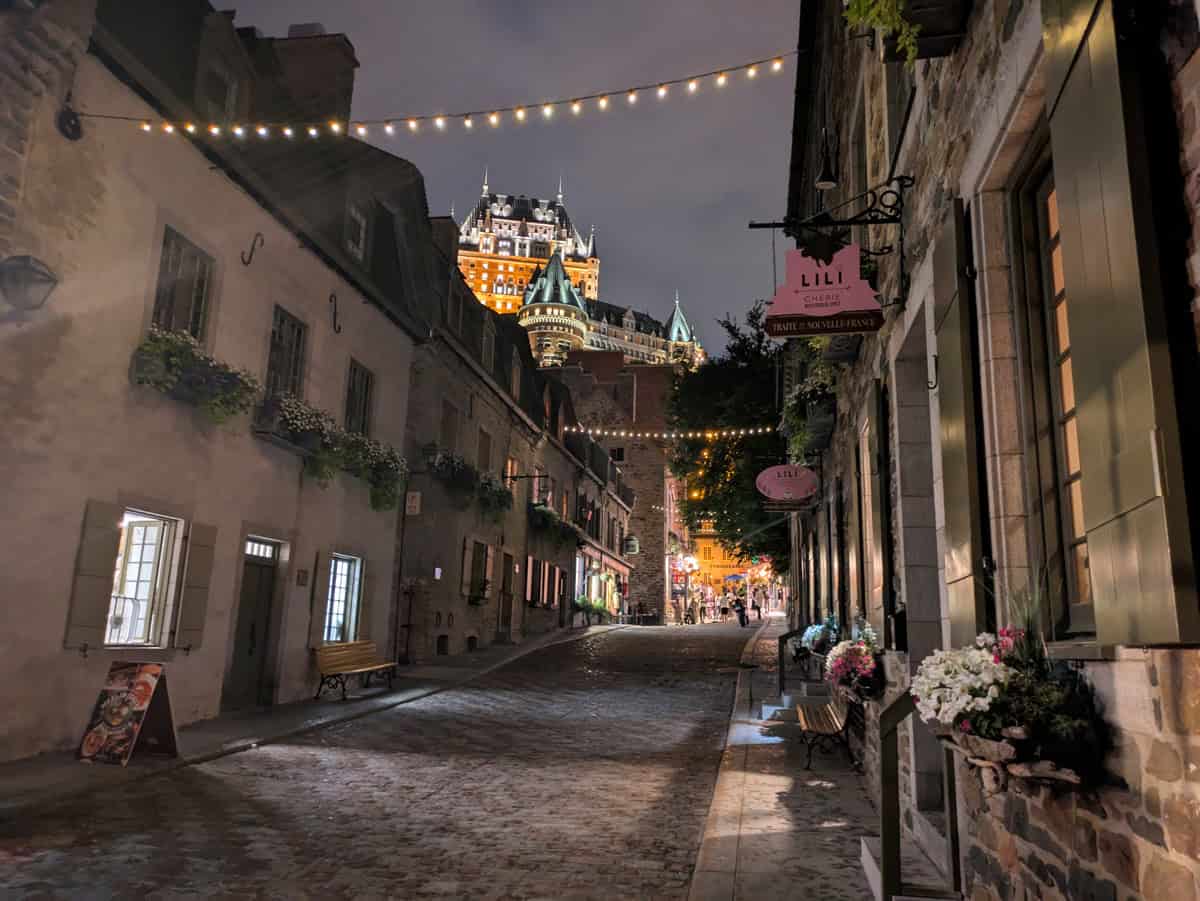
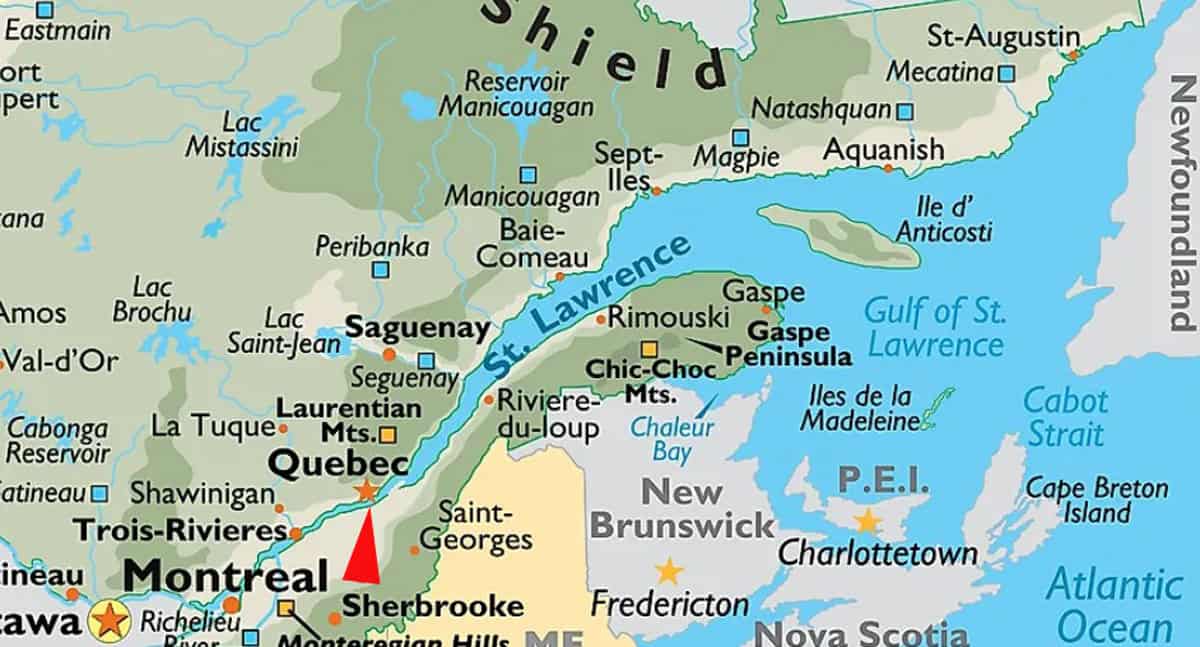
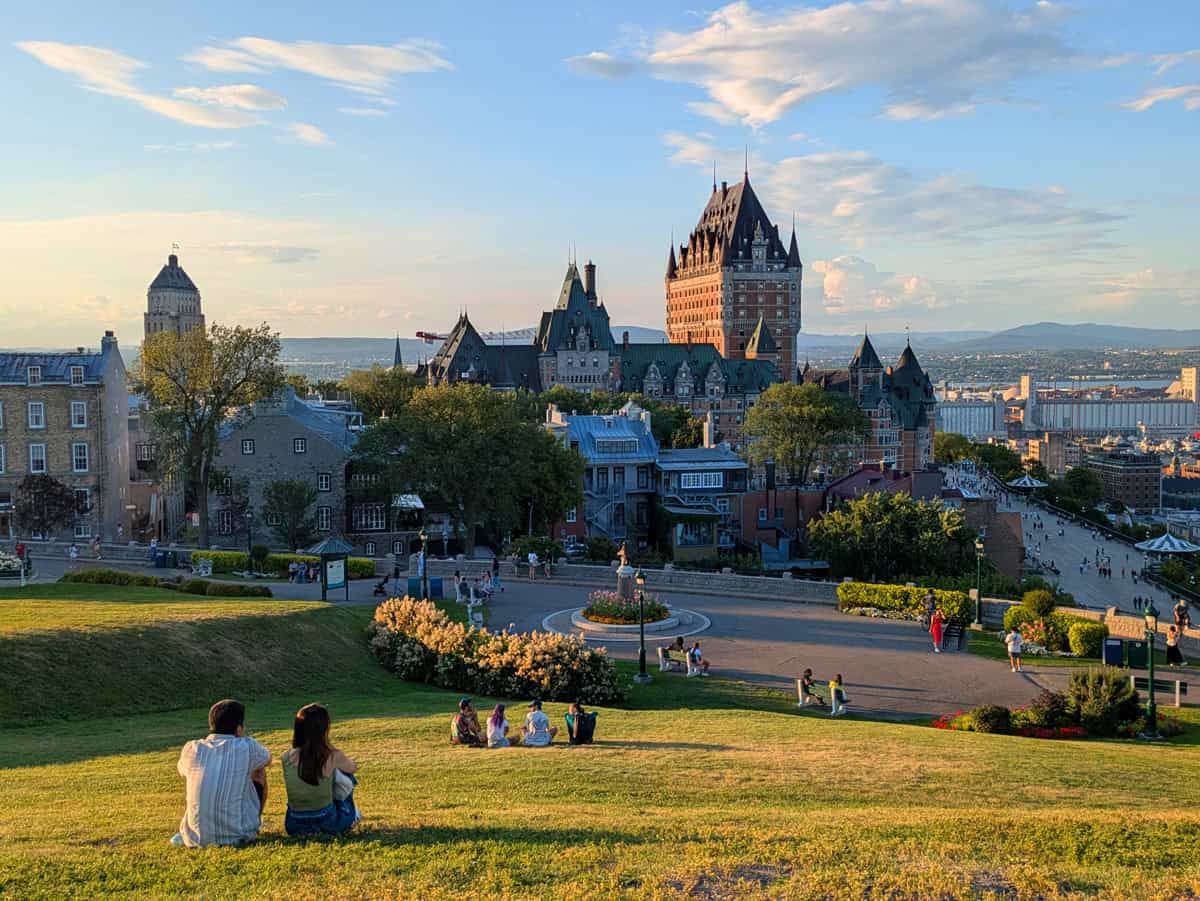
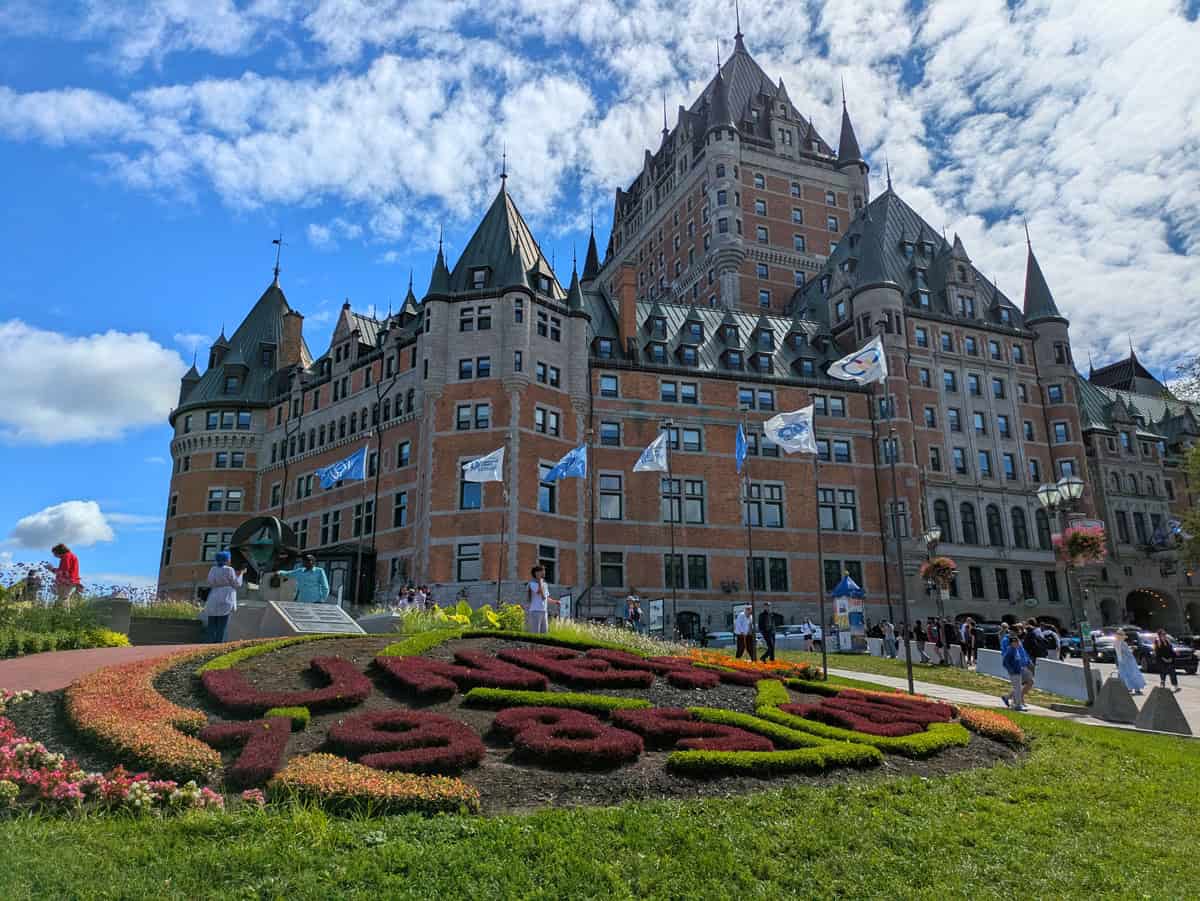
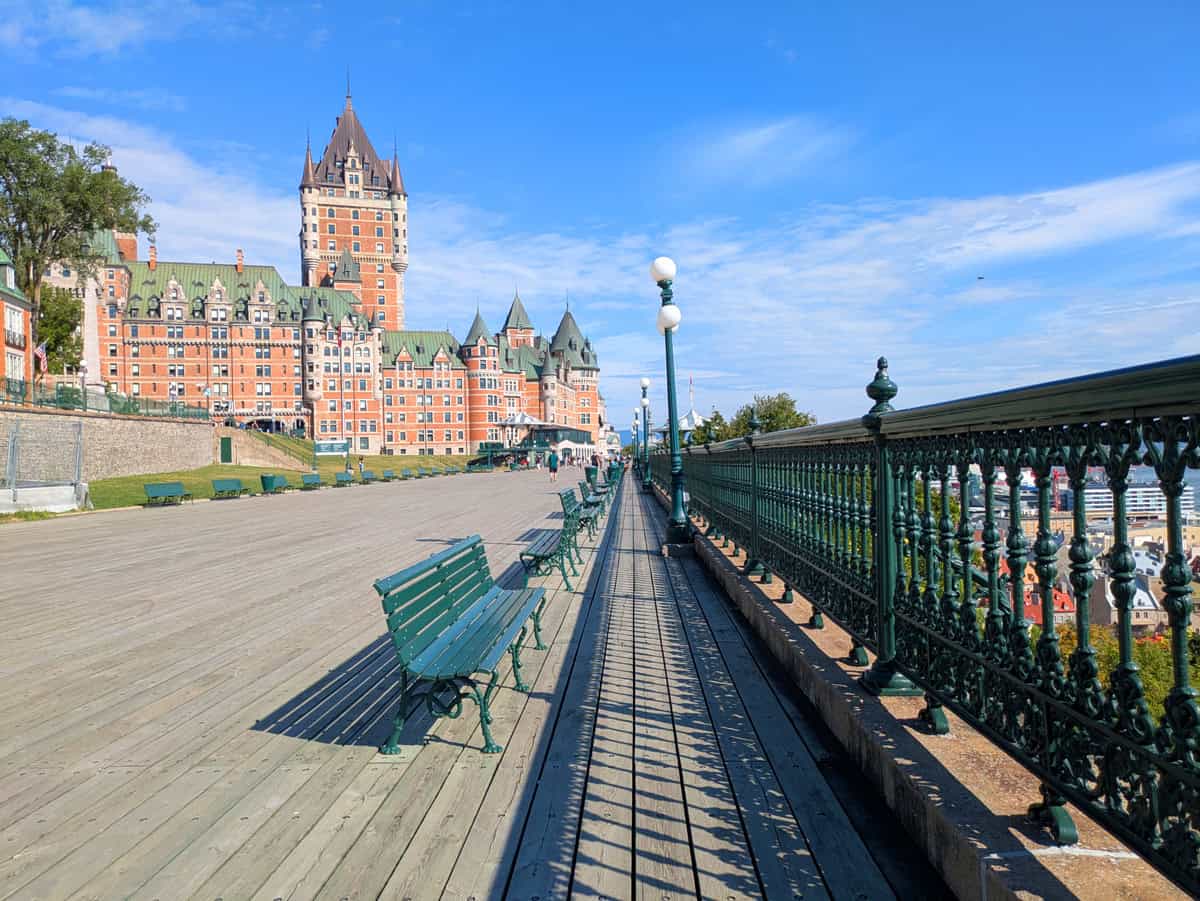

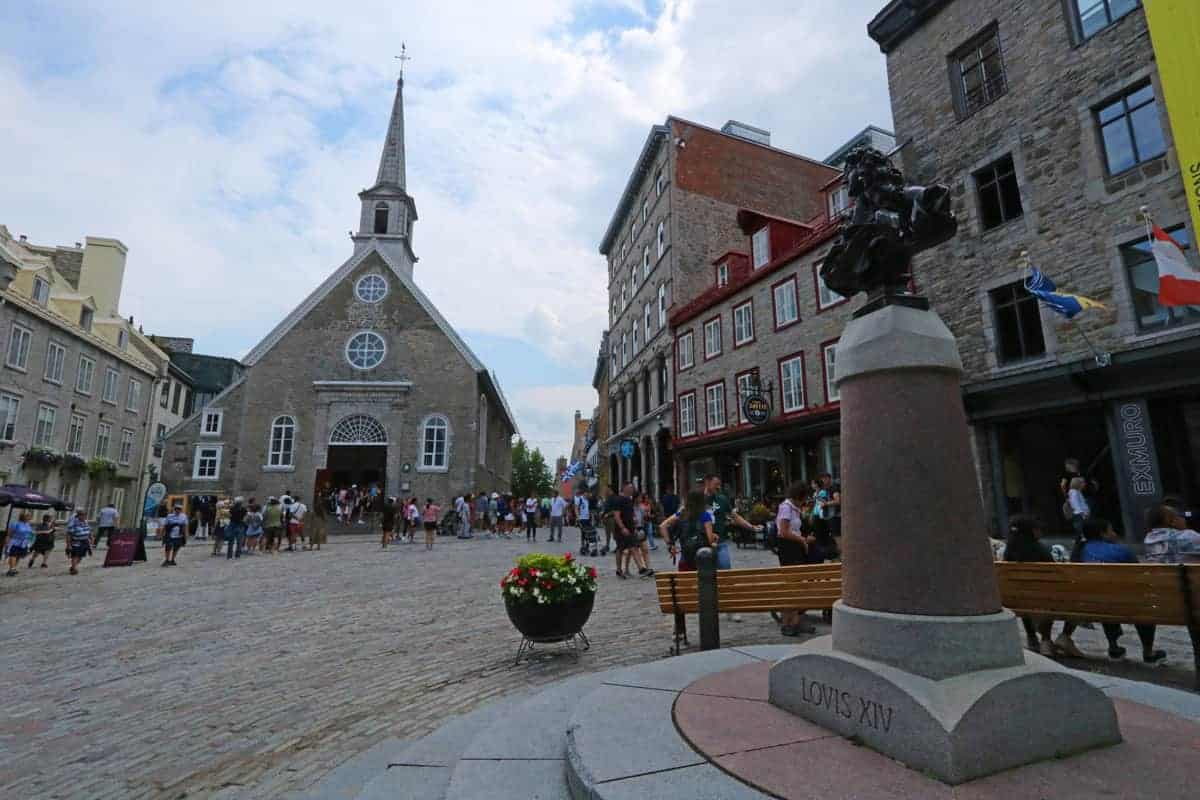
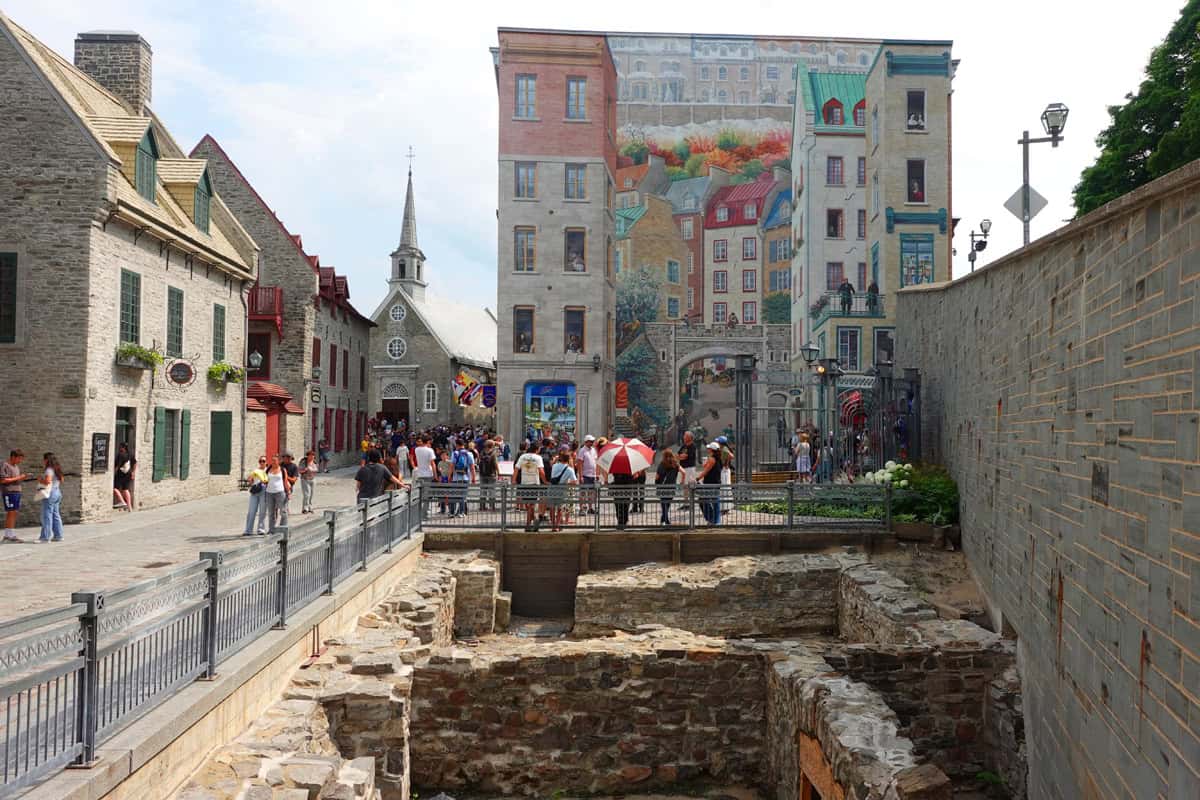
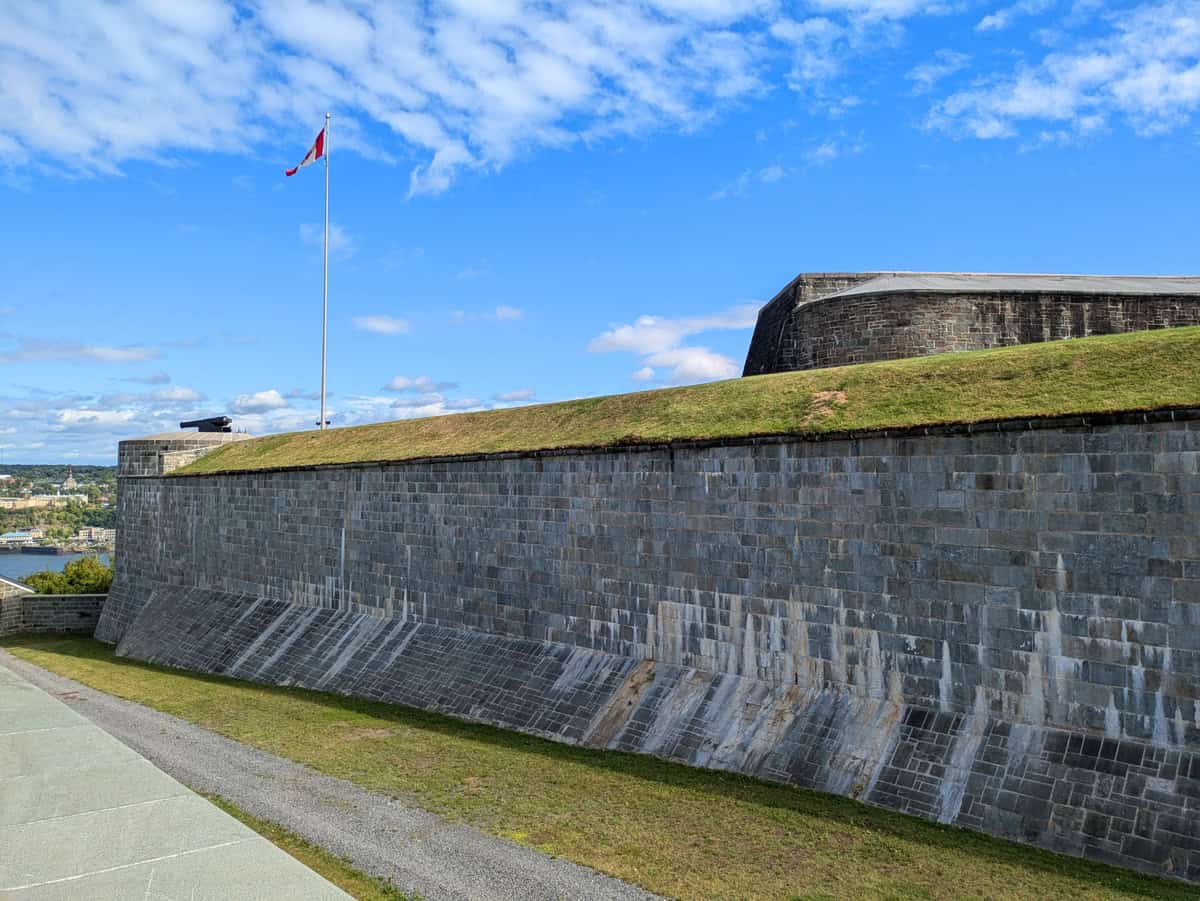
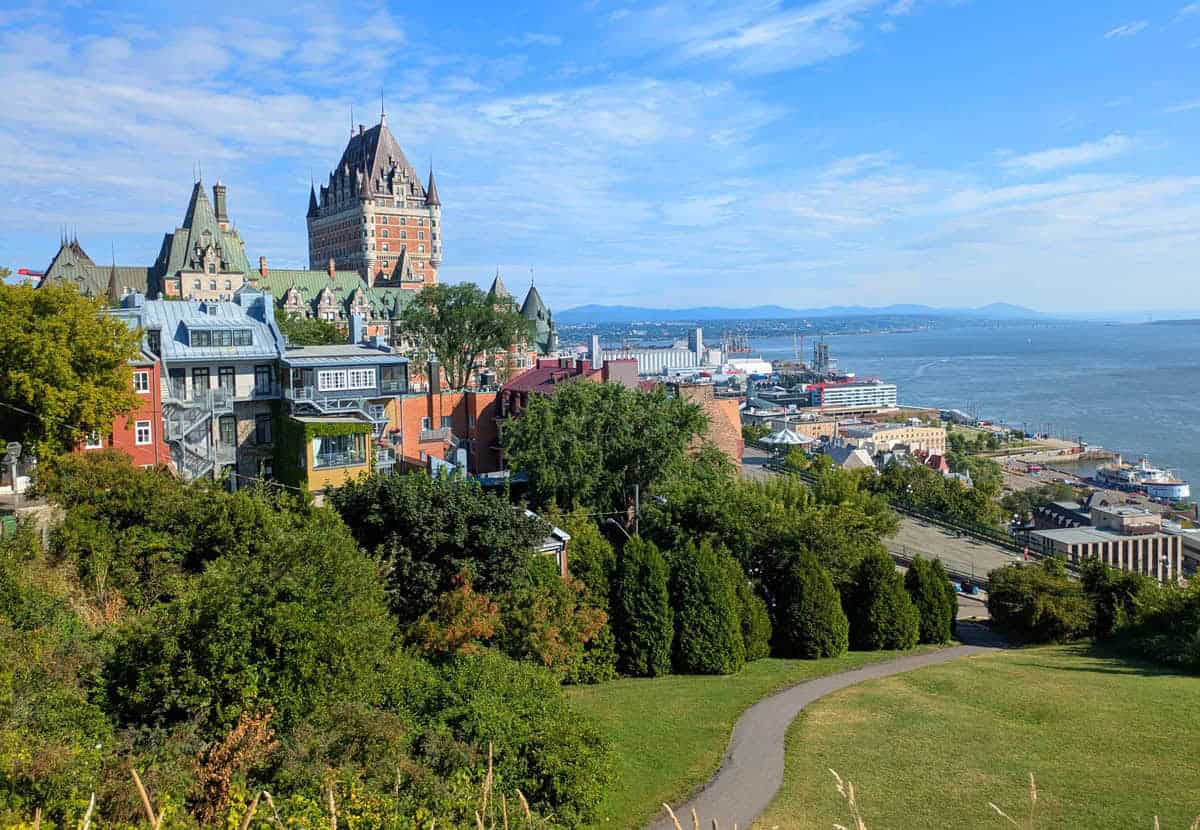
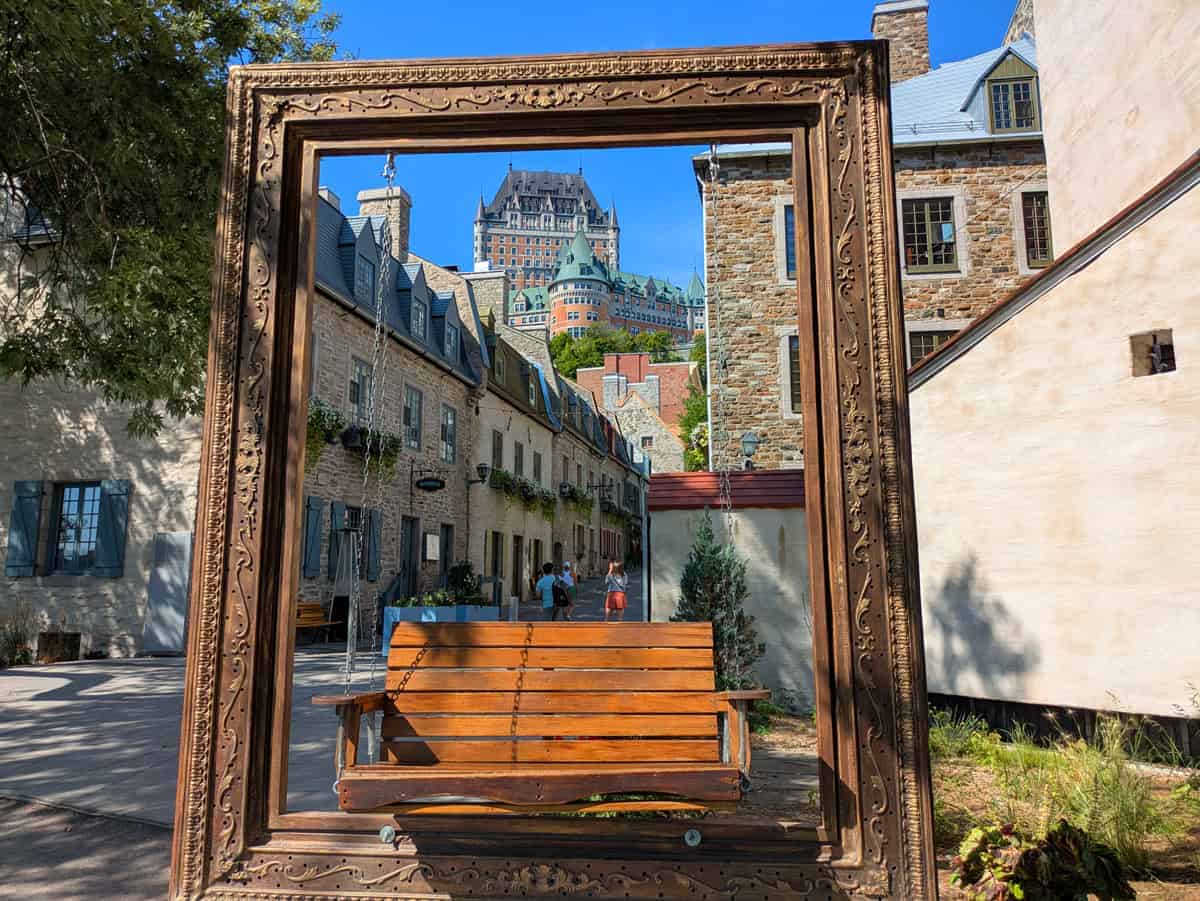
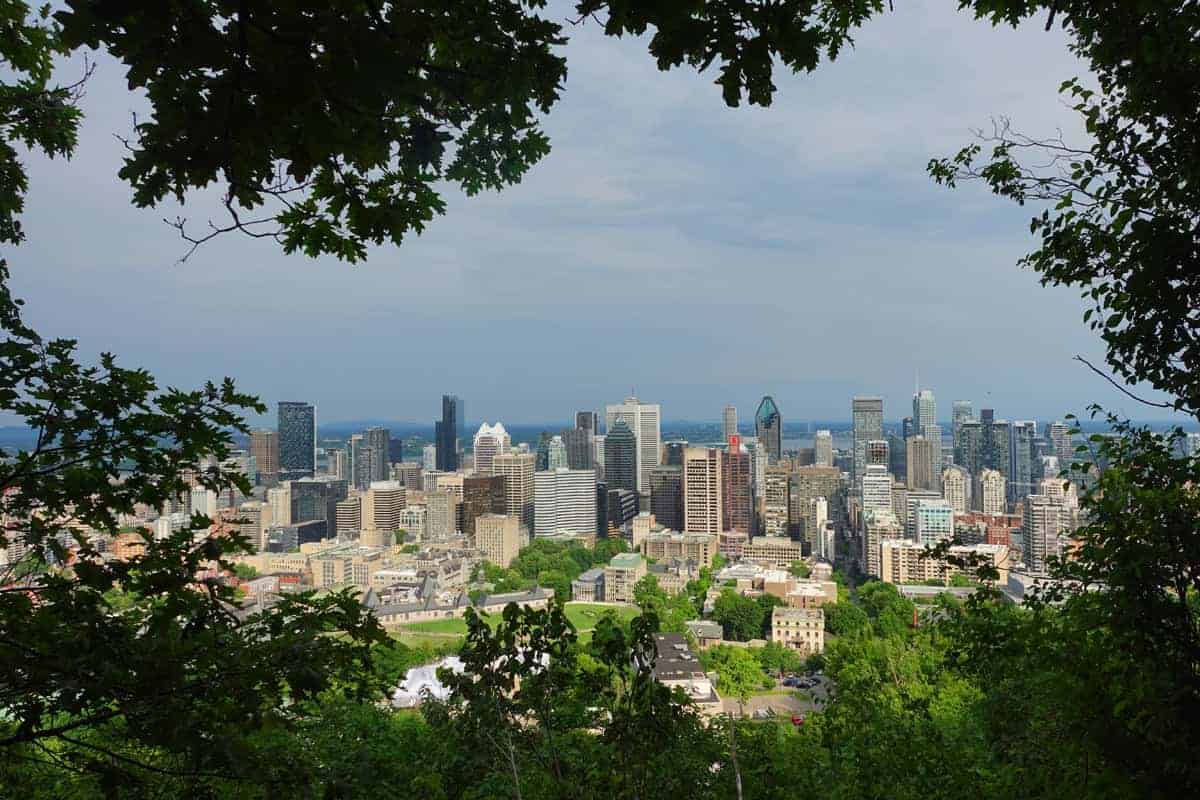
Leave a Reply